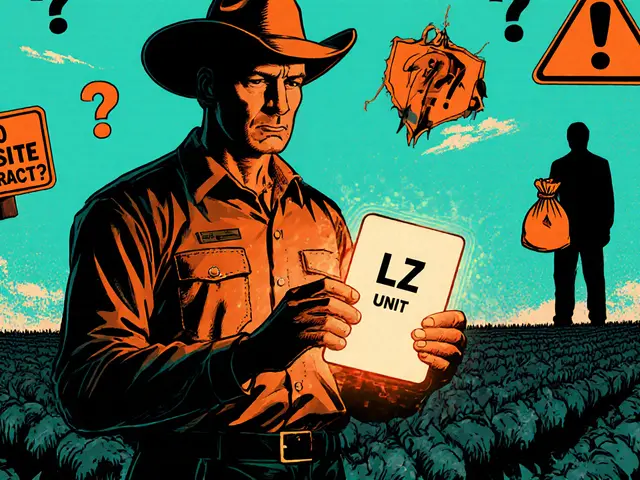
DeFi Compliance Cost Estimator
Estimated Compliance Investment
Click "Estimate Compliance Costs" to calculate your projected investment in DeFi compliance.
Quick Take
- DeFi protocols now face EU MiCA, US SEC custody rules, and FATF Travel Rule requirements.
- Pseudonymous wallets clash with KYC/AML mandates, creating new attack surfaces.
- Cross‑chain activity and oracle manipulation add technical layers to compliance.
- Implementing compliance can take 6‑24 months and costs far more than traditional finance.
- AI‑driven monitoring is becoming the industry standard to stay ahead of regulators.
When the crypto world talks about DeFi is a decentralized finance ecosystem that runs on blockchain smart contracts, allowing anyone with an internet connection to lend, borrow, trade, or earn yield without a central intermediary, the first thing that comes to mind is freedom. But in 2025 that freedom meets a growing wall of regulation. From the European Union’s Markets in Crypto‑Assets Regulation (MiCA) to the updated FATF Travel Rule, every protocol now has to answer: how do you stay permissionless *and* compliant? The answer is messy, expensive, and still evolving.
Why DeFi Compliance Is a Different Beast
Traditional banks have compliance departments, dedicated legal teams, and a clear line of authority. DeFi protocols, by design, lack a single legal entity to hold that responsibility. This architectural gap creates three core challenges:
- Identity Gap: Users interact via wallet addresses, not government‑issued IDs.
- Automation Gap: Smart contracts execute automatically; they can’t pause for a regulator’s request.
- Jurisdiction Gap: A single protocol can be accessed from dozens of countries, each with its own rules.
These gaps force developers to retrofit compliance tools onto immutable code, which is why many experts call the current wave a "massive new attack surface."
Key Regulatory Players in 2025
Below is a snapshot of the most impactful frameworks shaping DeFi today.
| Framework | Scope | Core Requirement | First‑Year Impact |
|---|---|---|---|
| MiCA | EU member states | License for public‑interest crypto assets; AML/KYC for custodial services | ~35% of DeFi projects targeting EU users began integrating KYC modules |
| FATF Travel Rule | Global VASPs | Share sender/receiver info for transfers >USD10,000 | Real‑time reporting APIs added to 20+ major DeFi aggregators |
| SEC Custody Rule (Rule 206(4)-2) | US private funds | Assets must be held by qualified custodians | Institutional DeFi funds shifted 40% of holdings to custodial bridges |
| DORA | EU digital service providers | Operational resilience and cyber‑risk reporting | DeFi platforms added mandatory incident‑response playbooks |
Technical Pillars of the Compliance Puzzle
Beyond legal language, the real pain points sit in the technology stack.
- Smart contracts are immutable. Adding a new compliance check often means redeploying or using upgradeable proxy patterns, which can be controversial in a community‑driven project.
- Oracles bring off‑chain data on‑chain. If a regulator wants real‑time transaction monitoring, the oracle itself becomes a compliance liability.
- Cross‑chain bridges let users hop between Ethereum, Solana, Avalanche, etc. Funds can be laundered by hopping across chains faster than any single‑chain analysis tool can track.
- KYC providers must integrate with decentralized front‑ends without exposing private keys, a non‑trivial UI/UX problem.
- AI‑driven monitoring tools (e.g., predictive analytics from blockchain analytics firms) are now required to flag abnormal patterns before they become crimes.

Building a Compliance Stack: From Theory to Practice
Most DeFi teams follow a three‑phase roadmap.
- Assessment & Gap Analysis - Map every user flow against MiCA, FATF, and local AML statutes. Identify which token flows need KYC, which can stay pseudonymous.
- Tool Integration - Choose a blockchain analytics vendor (Chainalysis, Elliptic, or a decentralized alternative). Deploy a KYC SDK that works with wallet‑connect and can pass compliance data to the smart contract via an oracle call.
- Governance & Monitoring - Set up an on‑chain governance module that can pause or upgrade contracts if regulators issue a freeze order. Pair this with an off‑chain SIEM that logs every compliance‑related event for DORA reporting.
Expect a minimum of 6‑12 months for an established protocol and up to 24 months for a brand‑new project.
Cost, Talent, and the Resource Crunch
Compliance isn’t just a line‑item; it’s a full‑blown department. A recent industry survey found that DeFi projects allocate an average of 18% of their operating budget to RegTech, compared with 7% for traditional fintech firms.
- Personnel: You need blockchain developers, compliance lawyers, and cyber‑risk analysts. Salaries for a senior blockchain compliance engineer now sit around NZD150k‑200k per year.
- Technology: Licensing a blockchain analytics platform can cost US$50k‑200k annually, depending on transaction volume.
- Legal Fees: Drafting a MiCA‑compliant whitepaper often requires a boutique law firm, adding another US$100k‑250k in the first year.
Small projects often can’t shoulder these costs, leading to market consolidation around well‑funded protocols like Aave, Maker, or Curve, which have already built compliance layers.
Practical Tips to Navigate the Minefield
Here are concrete steps you can take right now.
- Start with a KYC‑friendly gateway. Use a wallet‑connect flow that pauses the transaction until the user completes identity verification.
- Leverage open‑source compliance modules. Projects like OpenZeppelin’s defi‑compliance library provide reusable smart‑contract hooks for AML flagging.
- Implement on‑chain monitoring. Feed transaction data to an oracle that runs an AI model detecting splash‑loan attacks or flash‑loan arbitrage used for money‑laundering.
- Prepare for cross‑chain reporting. Design a metadata layer that tags each transfer with source and destination chain IDs, making it easier for analytics tools to follow the money.
- Document governance decisions. Under DORA, every change that impacts security must be logged and reviewed. Keep a public audit trail.
Future Outlook: Where Is DeFi Heading?
2025 is the tipping point. As regulators tighten the screws, two diverging paths are emerging:
- RegTech‑Enabled DeFi: Protocols that blend decentralization with robust compliance (think "Permissioned‑Lite"). These will attract institutional capital and likely dominate the next wave of yield products.
- Underground or Fractured Ecosystem: Projects that reject KYC entirely may migrate to privacy‑first chains, but they will face liquidity shortages and heightened enforcement.
In the long run, standardized compliance protocols-similar to ISO standards for banking-are expected to emerge. Until then, staying ahead means investing in AI monitoring, building flexible governance, and treating compliance as a core product feature, not an afterthought.
Frequently Asked Questions
What is the FATF Travel Rule and how does it affect DeFi?
The FATF Travel Rule requires Virtual Asset Service Providers to share sender and receiver details for transactions above USD10,000. For DeFi, this means any bridge, aggregator, or on‑ramp must embed identity data into the transaction payload or report it off‑chain, turning previously pseudonymous flows into traceable events.
Can a DeFi protocol stay completely permissionless under MiCA?
Purely permissionless protocols struggle to meet MiCA’s licensing and consumer‑protection rules. Many choose a hybrid model: the core protocol stays open, but front‑ends that on‑ramp fiat or provide custodial services obtain a MiCA license and enforce KYC.
How do smart‑contract upgrades work when regulators demand a change?
Developers use proxy patterns: a fixed proxy forwards calls to an implementation contract that can be swapped out by a governance vote. This lets a protocol pause or add new compliance checks without breaking existing user balances.
What are the biggest cost drivers for DeFi compliance?
Licensing fees for analytics platforms, legal counsel for jurisdiction‑specific filings, and hiring specialized engineers who understand both blockchain and regulatory tech. Expect at least a six‑figure budget for a mid‑size protocol.
Is AI monitoring really necessary, or can we rely on manual checks?
Manual reviews can’t keep up with the speed of blockchain transactions. AI models can flag suspicious patterns in seconds, allowing compliance teams to focus on high‑risk cases and meet real‑time reporting obligations.






There are 21 Comments
Vaishnavi Singh
DeFi's promise of unfettered financial freedom has always been a double‑edged sword, cutting both through traditional barriers and regulatory oversight. When you examine the architecture of a permissionless protocol, you quickly realize that the very code that empowers users also blindsides regulators. The identity gap means a transaction can be traced back to a cryptographic address, but not to a physical person, creating a void that compliance frameworks strive to fill. Moreover, the automation gap forces smart contracts to execute without pause, leaving no room for a manual freeze in the event of suspicious activity. Jurisdictional fragmentation adds another layer of complexity; a single contract can be invoked by participants spread across dozens of sovereign states. In practice, developers must retrofit KYC modules onto immutable code, often using proxy patterns that stir community debate. This retrofitting introduces upgrade vectors that could be exploited if not meticulously governed. The regulatory cost multiplier, as illustrated by MiCA and the FATF Travel Rule, can inflate budgets by 30‑50%. Talent scarcity compounds the issue, as finding engineers fluent in both blockchain and AML law is akin to locating a unicorn. Licensing fees for analytics platforms, sometimes reaching six figures, further erode profit margins. Legal counsel for cross‑border compliance can cost upwards of $200k in the first year alone. The cumulative effect is a compliance overhead that rivals, and sometimes exceeds, traditional financial institutions. Yet, this pressure also catalyzes innovation in RegTech, spawning AI‑driven monitoring solutions that can flag illicit patterns in real time. In the long run, standardization may emerge, but until then the ecosystem must treat compliance as a core product feature, not an afterthought. Ultimately, the tension between permissionless ideals and regulatory imperatives defines the next evolutionary step for DeFi.
Linda Welch
Oh great another compliance burden, because nothing says decentralized like a centralized forms page.
Kevin Fellows
Hey folks, looking at the numbers, it’s actually doable if you plan ahead. Start with a modular KYC plug‑in and keep the core protocol open. You’ll save a ton of headaches later, and the community will appreciate the transparency.
meredith farmer
Sure, keep your “modular plug‑in” while the regulators are already digging their claws into every transaction. If they decide to freeze your contracts tomorrow, your “modular” approach won’t save you. Trust no one, especially the so‑called “transparent” teams.
Peter Johansson
Looking at the compliance stack, I’d suggest pairing a reputable analytics vendor with an open‑source KYC SDK. It keeps costs manageable and you stay on the right side of MiCA 😊. Don’t forget to document every governance vote for DORA reporting.
Kyle Hidding
From a technical perspective, the integration of AML filters into immutable bytecode necessitates a proxy architecture, thereby introducing an upgradeability vector that must be rigorously audited to mitigate systemic risk. Failure to do so could result in non‑compliance with FATF reporting obligations and expose the protocol to sanction regimes.
Andrea Tan
I get why everyone’s stressed about the cost, but the community resources are growing. Many open‑source projects already share compliance modules, so you don’t have to reinvent the wheel.
Gaurav Gautam
Energy, folks! Think of compliance as a new frontier-an opportunity to build trust, attract institutional capital, and differentiate your protocol. Start small, iterate fast, and keep the user experience smooth.
Cody Harrington
Compliance is a necessary cost of doing business in 2025. Allocate budget accordingly.
Chris Hayes
While the regulatory landscape is undeniably complex, it also offers a chance for protocols that can navigate it efficiently to capture market share. Over‑engineering compliance can be as detrimental as under‑engineering it.
victor white
One must appreciate the nuanced interplay between cryptographic decentralization and legislative centralization, a dialectic that will undoubtedly sculpt the future of financial sovereignty.
sandi khardani
In evaluating the operational ramifications of the evolving regulatory environment, it becomes evident that the marginal cost of compliance in a decentralized architecture escalates exponentially as the protocol scales. The principal drivers of this cost inflation are the integration of high‑throughput AML analytics, the procurement of legal counsel versed in trans‑national financial statutes, and the implementation of upgradable proxy patterns to facilitate on‑chain governance interventions. Moreover, the necessity of real‑time transaction monitoring mandates the deployment of sophisticated machine‑learning pipelines capable of processing terabytes of ledger data daily, thereby imposing substantial computational overhead. Failure to adopt such measures not only jeopardizes regulatory standing but also exposes the protocol to heightened systemic risk. Consequently, a rigorous cost‑benefit analysis must be performed, weighing the projected capital influx from institutional actors against the recurring compliance expenditure. In practice, a balanced approach-leveraging modular compliance components, open‑source governance frameworks, and strategic partnerships with RegTech firms-offers the most sustainable pathway forward.
Christina Norberto
It is incumbent upon the governance council to meticulously adhere to the statutory mandates set forth by the European Union's Markets in Crypto‑Assets Regulation (MiCA) and the Financial Action Task Force (FATF) Travel Rule, thereby ensuring that all custodial operations are performed by duly licensed entities. Failure to comply may result in punitive sanctions and irrevocable reputational damage.
Fiona Chow
Oh, look at you, trying to read the fine print while pretending it’s not a massive headache.
Rebecca Stowe
Keep your head up! Even with the heavy compliance load, there’s a bright side-more trust means more users and liquidity.
Aditya Raj Gontia
Compliance cost? Yeah, it’s a thing. You’ll need to pay for it.
Mark Briggs
Regulation sucks but it’s there.
mannu kumar rajpoot
Everyone’s talking about the cost, but they forget the hidden agenda of the global banking elite pushing these rules to maintain control over the decentralized space.
Tilly Fluf
In light of the prevailing regulatory frameworks, it is advisable to pursue a measured integration of compliance mechanisms, thereby preserving both operational integrity and user confidence.
Darren R.
Ah, the noble pursuit of decentralization-now shackled by the tyrannical edicts of regulatory bodies!; one must either acquiesce to the insidious encroachments or risk annihilation!
Hardik Kanzariya
Compliance is tough but we can get through it together.
Write a comment
Your email address will not be published. Required fields are marked *